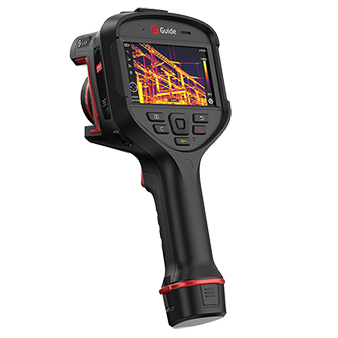
# Thermal Imaging Technology: Principles and Applications
## Introduction to Thermal Imaging
Thermal imaging, also known as infrared thermography, is a technology that allows us to see and measure thermal energy emitted from objects. Unlike visible light cameras, thermal imagers detect infrared radiation and convert it into visible images that represent temperature variations across a scene.
## How Thermal Imagers Work
At the heart of every thermal imager is an infrared detector that captures the infrared radiation emitted by all objects above absolute zero. This radiation is then processed to create a “heat picture” called a thermogram. Modern thermal cameras use focal plane array (FPA) detectors that can detect temperature differences as small as 0.01°C.
The process involves several key steps:
- Infrared radiation collection through specialized optics
- Conversion of radiation into electrical signals
- Signal processing and temperature calculation
- Display of thermal image with color or grayscale representation
## Key Components of Thermal Imaging Systems
1. Infrared Detector
The most critical component, typically made of materials like vanadium oxide or amorphous silicon, which are sensitive to infrared wavelengths.
2. Optical System
Special lenses made from materials like germanium or chalcogenide glass that transmit infrared radiation effectively.
3. Signal Processing Electronics
Converts the raw detector signals into usable temperature data and images.
4. Display System
Shows the thermal image, often with adjustable color palettes to highlight temperature differences.
## Applications of Thermal Imaging Technology
Industrial Applications
Thermal imagers are widely used for predictive maintenance, electrical inspections, and mechanical equipment monitoring. They can identify overheating components before failure occurs.
Building Diagnostics
In construction, thermal imaging helps detect heat loss, moisture intrusion, and insulation defects. Energy auditors use them to improve building efficiency.
Medical and Healthcare
Thermal cameras assist in fever screening, vascular disorder detection, and monitoring inflammation or circulatory problems.
Security and Surveillance
Thermal imaging provides effective night vision capabilities, allowing detection of intruders or wildlife in complete darkness.
Firefighting and Search & Rescue
Firefighters use thermal imagers to see through smoke, locate hotspots, and find victims in low-visibility conditions.
## Advantages of Thermal Imaging
Thermal imaging offers several unique benefits:
- Non-contact temperature measurement
- Ability to work in complete darkness
- See through smoke, fog, and some materials
- Detect problems invisible to the naked eye
- Fast scanning of large areas
## Future Developments in Thermal Imaging
The thermal imaging industry continues to evolve with advancements in detector technology, image processing algorithms, and miniaturization. Emerging trends include:
- Higher resolution detectors at lower costs
- Integration with AI for automated analysis
- Smaller, more portable devices
- Improved sensitivity and temperature accuracy
- Combination with other sensing technologies
As thermal imaging becomes more accessible and affordable, we can expect to see even broader adoption across various industries and applications.
Keyword: thermal imager
Comments are closed